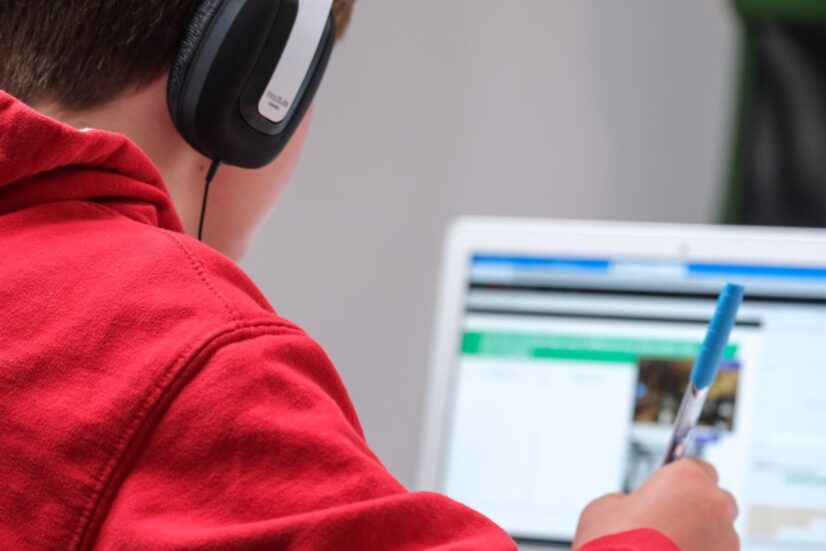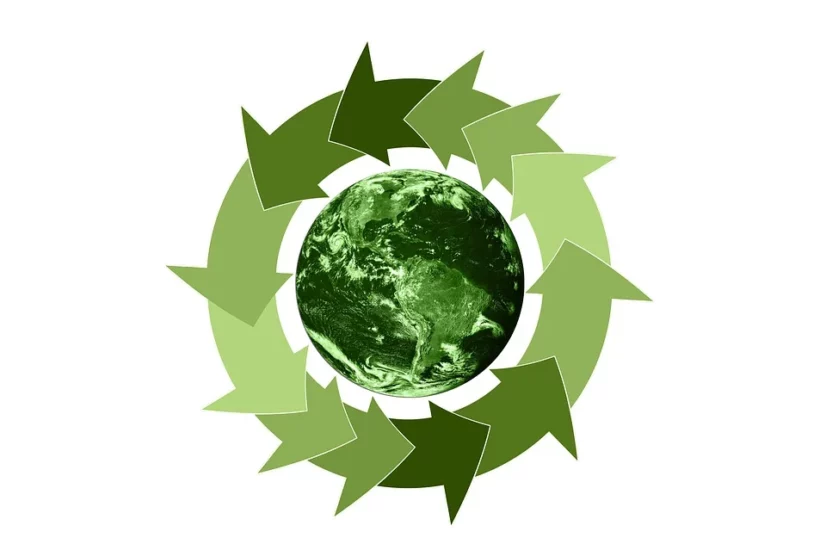Artificial intelligence (AI) has become an integral part of our daily lives, often in ways we might not immediately recognize. From enhancing healthcare diagnostics to personalizing our online experiences, AI’s influence is pervasive. As we delve into 2025, let’s explore five of the most unconventional applications of AI that are making waves this year.
1. AI-Driven Mental Health Support
AI technologies are being integrated into various aspects of mental health care, from diagnostics to therapeutic interventions. One notable example is the use of AI-powered chatbots designed to offer real-time emotional support and cognitive-behavioral therapy (CBT) techniques. These virtual therapists engage users in conversations, helping them navigate emotional challenges and develop coping strategies.

For instance, «Sonny,» a hybrid chatbot developed by Sonar Mental Health, is utilized in schools across the United States to address the shortage of counselors. Serving over 4,500 students in nine districts, Sonny provides support during stressful periods, such as college applications and exams. Trained in motivational interviewing and CBT techniques, the AI engages teens in relatable dialogues and alerts authorities if students express intentions of self-harm or violence. School staff monitor these interactions, intervening when necessary to connect students with professional counselors. This proactive approach has been instrumental in addressing students' mental health needs and reducing behavioral infractions.
However, the integration of AI in mental health care is not without challenges. In Spain, psychologists have raised concerns about chatbots presenting themselves as therapists. Experts argue that while AI can provide immediate support, it lacks the emotional depth, ethical judgment, and nuanced understanding that human therapists offer. There have been instances where reliance on AI chatbots led to adverse outcomes, particularly among adolescents. As a result, professionals are advocating for legislation to regulate the use of AI in therapeutic contexts to protect vulnerable individuals seeking help.
Despite these concerns, AI-driven tools continue to democratize access to mental health support. With just a smartphone, individuals can access resources, engage in therapeutic conversations, and find community support, especially in remote areas where mental health professionals are scarce. Moreover, AI can offer services in multiple languages, breaking down barriers that often prevent individuals from seeking help. This inclusivity fosters a more supportive environment for people from diverse backgrounds.
In summary, AI-driven mental health support in 2025 presents a blend of opportunities and challenges. While AI offers scalable and accessible solutions to address the growing demand for mental health services, it is crucial to balance technological advancements with ethical considerations and human oversight to ensure effective and safe care for all individuals.
It’s essential to remember that while AI companions offer valuable support, they are not a replacement for professional mental health care.
2. AI in Wildlife Conservation
One notable application of AI is in bioacoustics, where researchers record and analyze natural sounds to monitor biodiversity. In Costa Rica’s AmistOsa Biological Corridor, bioacoustician Monica Retamosa utilizes automated recording technology to capture the region’s soundscape. By combining these recordings with AI and machine learning, her team can identify species and assess ecosystem health non-invasively. This approach provides critical data for tracking biodiversity changes and informing conservation policies.

AI also enhances anti-poaching efforts. In Uganda’s Murchison Falls National Park, conservationists equip African white-backed vultures with high-tech tracking devices. These devices, powered by AI, monitor the vultures' movements to detect potential poaching activities. By analyzing behavioral patterns, rangers can identify and respond to illegal hunting incidents more effectively, contributing to a significant reduction in poaching within the park.
Moreover, AI aids in understanding animal communication. The Earth Species Project, a nonprofit research lab, employs machine learning to decode vocalizations of species such as zebra finches and beluga whales. By interpreting these sounds, researchers aim to foster ecological understanding and enhance conservation efforts, potentially transforming human interactions with wildlife.
In Namibia, AI-powered systems are revolutionizing animal tracking. The Brown Hyena Research Project collaborates with WildTrack to develop technology that identifies individual hyenas through their footprints. By creating a reference library of tracks and analyzing subtle differences, AI provides detailed insights into hyena movements and behaviors, aiding in their protection and study.
These examples illustrate how AI-driven tools are transforming wildlife conservation in 2025, offering scalable and effective solutions to protect biodiversity and ensure the survival of endangered species.
The use of AI in conservation highlights the fusion of technology and environmental stewardship, offering hope for endangered species worldwide.
3. AI-Enhanced Art Restoration
AI’s integration into art restoration processes has revolutionized the field by providing tools that enhance accuracy and efficiency. For instance, AI models trained on vast collections of historical artworks can identify patterns and textures specific to an artist or period. Convolutional Neural Networks (CNNs) analyze brushstrokes and color schemes, guiding restorers in accurately reconstructing missing or damaged sections of a piece.

A notable application of AI in this domain is the development of Distributed Denoising Convolutional Neural Networks (DDCNN). These networks are designed to remove distortions from deteriorated artworks while preserving intricate details. By training on diverse datasets containing images with various types of degradation, DDCNNs can adapt to different restoration needs, effectively transforming compromised artworks back to their original glory.
The Vatican has also embraced AI technology to preserve its treasures. In preparation for the 2025 Holy Year Jubilee, the Vatican collaborated with tech firms to create a digital replica of St. Peter’s Basilica. Utilizing drones, cameras, and lasers, they collected extensive data to construct a 3D model. AI algorithms processed this data, aiding in both virtual access for the public and providing a detailed reference for future preservation and restoration efforts.
While AI offers substantial advancements in art restoration, it serves as a complementary tool requiring the expertise of human conservators. The nuanced understanding and ethical considerations that professionals bring ensure that restorations honor the original intent and cultural significance of artworks. This collaboration between technology and human insight is shaping a new era in the preservation of our shared artistic heritage.
While AI provides remarkable insights, the expertise of human restorers remains invaluable in the delicate process of art conservation.
4. AI-Powered Personalized Education
AI’s integration into education has led to the development of Intelligent Tutoring Systems (ITS) that provide customized instruction. Platforms like Squirrel AI and Carnegie Learning analyze students' progress, identifying areas that require reinforcement, and offer real-time feedback to guide learners through challenging concepts. This personalized approach fosters a deeper understanding and retention of subject matter.

Adaptive learning platforms further enhance personalized education by dynamically adjusting content based on individual performance. Tools such as DreamBox and Smart Sparrow modify lesson difficulty and presentation style in response to a student’s interactions, ensuring that learners remain engaged and challenged appropriately. This adaptability caters to diverse learning paces and preferences, promoting a more inclusive educational environment.
In Estonia, a national initiative called AI Leap has been launched to integrate AI education into high school curricula. Collaborating with U.S. tech companies OpenAI and Anthropic, the program aims to equip 20,000 students and 3,000 teachers with AI learning tools. This effort not only prepares students for future careers but also promotes critical thinking and AI literacy from an early age.
Educators are also benefiting from AI through tools that provide feedback on teaching practices. For example, a project funded by the Bill & Melinda Gates Foundation is developing an AI system that analyzes classroom interactions to offer constructive feedback to teachers. By evaluating engagement strategies and instructional methods, the AI assists educators in refining their techniques, ultimately enhancing the quality of education delivered.
However, the integration of AI in education is not without challenges. Concerns regarding data privacy, potential biases in AI algorithms, and the need for substantial investment in infrastructure and training are prevalent. Addressing these issues is crucial to ensure that AI-driven personalized education is both effective and equitable.
In summary, AI-powered personalized education in 2025 offers a transformative approach to learning, tailoring educational experiences to meet individual needs. By embracing these technologies while conscientiously addressing associated challenges, the educational landscape can evolve to support diverse learners in achieving their full potential.
Educators should view AI as a tool to enhance teaching methods, ensuring that the human touch remains central to the learning experience.
5. AI in Sustainable Agriculture
AI-powered systems are revolutionizing various aspects of farming. For instance, AI-driven precision agriculture enables farmers to monitor soil health in real-time, allowing for optimized nutrient management and reduced fertilizer usage. This approach not only enhances crop yields but also mitigates environmental degradation.

In the realm of pest management, AI offers targeted solutions that minimize chemical applications. By analyzing data from sensors and imaging technologies, AI can identify pest-infested areas within a field, enabling farmers to apply treatments only where necessary. This precision reduces pesticide use, safeguarding beneficial insects and promoting biodiversity.
AI’s role extends to autonomous machinery, with companies like John Deere unveiling self-driving tractors equipped with AI capabilities. These machines can perform tasks such as planting and harvesting with high efficiency, addressing labor shortages and reducing operational costs. The integration of AI in machinery ensures precise field operations, leading to better resource management and lower emissions.
Moreover, AI-driven weather forecasting tools are empowering smallholder farmers, particularly in regions like rural India. Access to accurate, localized weather predictions enables these farmers to make informed planting decisions, reducing crop failures and enhancing food security. This technological support is crucial in adapting to climate variability and ensuring sustainable livelihoods.
However, the implementation of AI in agriculture is not without challenges. High initial costs, data privacy concerns, and the need for technical expertise can hinder widespread adoption, especially among small-scale farmers. Addressing these issues requires collaborative efforts from governments, technology providers, and the agricultural community to develop accessible and affordable AI solutions.
In summary, AI’s integration into sustainable agriculture in 2025 offers transformative potential to enhance productivity, conserve resources, and promote environmental stewardship. By embracing these technologies thoughtfully, the agricultural sector can move towards a more resilient and sustainable future.
Integrating AI into agriculture not only boosts efficiency but also supports the global effort to combat climate change through sustainable practices.
These unconventional applications of AI in 2025 demonstrate the technology’s versatility and potential to address diverse challenges across various sectors. As AI continues to evolve, its innovative uses will undoubtedly expand, further embedding itself into the fabric of our daily lives.










